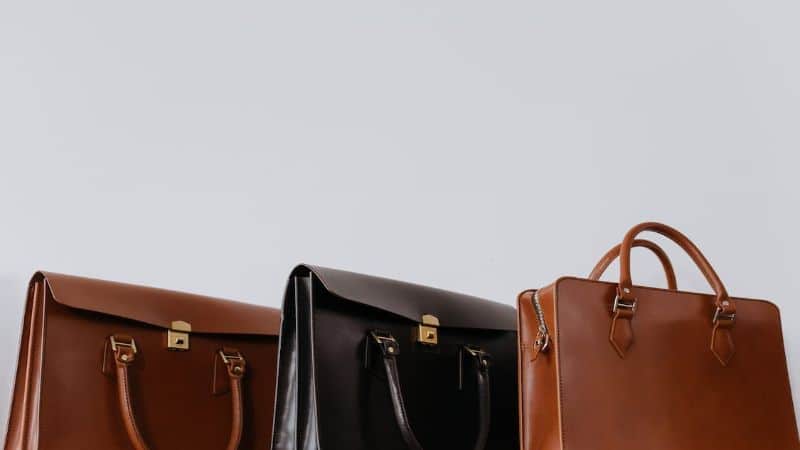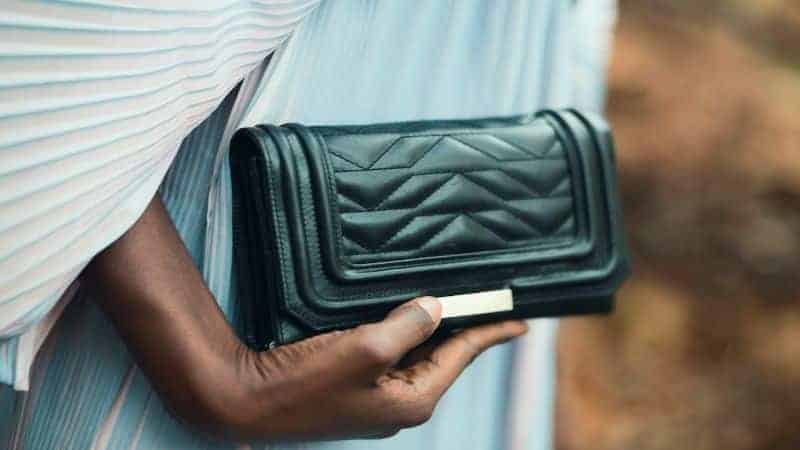Discovering mold in your favorite handbag can feel like a nightmare. But don’t worry, it’s not the end of the road for your cherished accessory. With a few simple steps, you can bring it back to life.

Mold can sneak up on the best of us, especially if you’ve stored your bag away during the damp season. Luckily, you’ve got the power to tackle this pesky invader right at home.
Whether it’s a vintage find or a designer splurge, keeping your handbag mold-free is essential for its longevity. Get ready to roll up your sleeves and save your bag with some trusty DIY mold removal techniques.
Why Mold in Handbags is a Problem
You’re not just dealing with an unsightly issue when you find mold in your handbag. Mold poses a serious threat to the integrity of your favorite accessory. Leather, suede, and fabric—all can succumb to mold damage, causing your bag to degrade prematurely.
Here’s why you should be concerned:
- Health risks: Mold is a known allergen and irritant. If your handbag has mold, it can lead to respiratory problems or allergic reactions whenever you’re near it.
- Odor: A musty smell can permeate from your bag and its contents, making it unpleasant to carry or even store in your closet.
- Aesthetic damage: Mold can leave stubborn stains and can ruin the unique finish of your handbag, and if it’s a designer piece, this could significantly diminish its value.
- Structural damage: Over time, mold can eat away at natural materials, causing the seams to weaken and the material to tear.
Quick action can save your handbag from these pitfalls. Start by identifying the type of material your bag is made of; this will determine the cleaning method you’ll use. Leather requires a different approach compared to fabric. Don’t let mold have the final say in your handbag’s lifespan—tackling it head-on will keep your accessory in top-notch condition for years to come.
Remember, prevention is key. Store your handbags properly to avoid mold growth. Ensure they’re clean and dry before putting them away, and consider using silica gel packets to absorb any excess moisture. Regular checks during damp seasons can also help spot potential mold before it takes hold. Keep your handbags aired out and in a well-ventilated area to thwart mold’s attempts at making a new home in your cherished collection.
Signs of Mold in Your Handbag
Mold in a handbag doesn’t just appear out of nowhere. Spotting the signs early is crucial in preventing further damage. Your first clue? A musty smell, often unmistakable and pungent. If you’re catching whiffs of an earthy, damp odor every time you open your bag, take heed – it’s likely that mold has begun to set up shop.
Next, look for visual cues. Mold manifests in a variety of ways, but typically, you’ll see superficial spots or discoloration. These can range from white and fuzzy to black or green splotches – mold doesn’t discriminate based on color.
Don’t forget to check less obvious places. Peek inside pockets, nooks, and crannies, mold loves to hide in these rarely disturbed areas. Pay extra attention to seams and corners, using a flashlight if necessary.
Keep an eye out for a powdery or flaky substance on your handbag’s surface; this could be a colony in its early stage. Also, if your handbag feels unusually damp or its material is starting to degrade, it’s time for action.
Materials react differently to mold. Leather might get a white, powdery coating, while fabric could show signs through unusual staining. Your handbag’s texture may change as well, becoming brittle or tacky to the touch.
What if you only suspect mold but aren’t sure? It’s better to err on the side of caution. Investigate any suspicious areas and don’t ignore your instincts. Remember, your health and handbag are at stake.
Prep Work: Cleaning Supplies You’ll Need
Before diving into the mold removal process, you’ve got to stock up on the right cleaning essentials. Your handbag is precious, and choosing the correct supplies is paramount for cleaning without damaging it. Here’s what you’ll need:
- White vinegar or alcohol: Both have excellent antimicrobial properties, making them great for killing mold spores.
- Soft cloth: For wiping away the mold. A microfiber cloth works best as it’s gentle and doesn’t leave behind lint.
- Soft-bristled brush: To scrub off mold gently without harming the bag’s material.
- Leather conditioner or fabric protector: After cleaning, this is crucial to protect your bag and restore moisture, especially if it’s leather.
Ensure you’ve got a supply of warm water to dilute the vinegar. If using alcohol, it’s typically potent enough on its own. Always test any cleaning solution on a small, inconspicuous spot before tackling the whole handbag. This helps you dodge any potential discoloration or damage.
While working, keep the handbag in a well-ventilated area. Good airflow aids in the drying process and helps dispel fumes from your cleaning agents.
For effective mold removal, patience and gentle handling are your best friends. Scrub with care; avoiding aggressive brushing keeps the fabric or leather intact. Remember, your handbag’s durability varies by material and design, so proceed with consideration.
After dealing with visible mold, don’t forget about the nooks and crannies. Use a cotton swab dampened with your chosen cleaner to get into those tight spots. Spotless handbags aren’t a myth—they’re the result of meticulous cleaning and love for your accessory.
Now that you’re equipped with the know-how and tools, you’re ready to tackle that pesky mold. Keep in mind, this isn’t just about cleaning—it’s about preserving and cherishing that stylish investment swinging from your shoulder.
Step 1: Emptying and Cleaning the Bag
« Why Handbags Are Essential: More Than Fashion, It’s Your Life
Ultimate Handbag Kit Essentials: Stay Prepared for Anything »
Before tackling the mold, empty your handbag. Remove all contents — yes, every receipt and stray lipstick. Check pockets, hidden compartments, and card slots. You’re aiming for a blank canvas to work your magic on.
Shake out any debris over a trash can. Now, let’s talk surfaces. If it’s a leather bag, use a dry, soft cloth to wipe away any loose particles on the interior and exterior. Fabric bags may tolerate a quick, gentle vacuuming using an upholstery attachment.
Next up: the cleaning solution. Remember the white vinegar or alcohol you’ve got on hand? Mix one part water with one part white vinegar or alcohol in a bowl. Dip a corner of a clean, soft cloth into the mixture and wring it out so it’s damp, not dripping.
Test the solution on a small, inconspicuous area. Wait a few minutes. No discoloration or damage? Great. Proceed to gently wipe down the affected areas. Be thorough but gentle. Focus on seams and crevices where mold loves to hide.
For persistent spots, employ a soft-bristled brush. Brush lightly in circular motions to loosen the mold’s grip. Don’t be tempted to go in hard; it’s not about strength but technique and patience.
After spot-cleaning, let your bag air out. Prop it open in a well-ventilated area away from direct sunlight. This step is crucial for preventing future mold growth. Keep it there until it’s completely dry to the touch before moving on to conditioning or protecting the material.
Step 2: Treating the Mold Affected Areas
Once your bag’s empty and dust-free, spot-treatment starts. You’re tackling mold head-on, so gear up with gloves. Remember, this is about saving your favorite accessory.
Mix your solution, equal parts white vinegar or alcohol and water. Be precise; your bag’s life depends on this balance. Test it – find an inconspicuous spot and dab a little cleaner. No discoloration? You’re good to proceed.
Start with the softest cloth you can find. Begin wiping gently; your goal is eradication without damage. Zero in on seams and crevices, mold’s favorite hideouts. Don’t drench the material. Your cleaning motions should be deliberate and controlled.
Encounter tough spots? Don’t resort to force. Take a soft-bristled brush; think old toothbrush, nothing harsher. Scrub lightly, just enough to loosen that stubborn mold. Then, back to the cloth – wipe away the residue.
As you progress, keep assessing the bag’s condition. Are the spots lifting? Is the material holding up? Adjust your pressure and technique as needed. It’s a delicate balance between thorough and gentle.
Once you’ve made your pass over all mold-affected areas, resist the urge to pack the bag away immediately. It’s damp from the spot-treatment, and moisture is mold’s ally. A dry, well-ventilated spot is your next destination for the bag.
Leave it open, unzipped, unsnapped. Let air circulate freely, inside and out. Optimal drying is your focus here. This isn’t a race; give it time. Only when every seam, every pocket, every fold is bone dry should you consider the next steps in restoring your bag’s pristine condition.
Step 3: Drying your Handbag
Once you’ve tackled the mold, drying your handbag properly is crucial. Mold thrives in moisture, so ensure every detail is bone dry to prevent a recurrence. Your best bet is to leave the bag in a well-ventilated area where there is a consistent flow of fresh air. Avoid direct sunlight or heat sources; while it may seem like a quick fix, they can damage your handbag’s material.
If you’re dealing with a fabric bag, you can prop open the bag with a clean, dry towel inside. This helps the bag maintain shape and allows the interior to air out effectively. For leather bags, stuff it with silica gel packets instead. They’re champions at absorbing dampness and are gentle on delicate materials.
Remember, patience is key. Give your bag ample time to dry—rushing the process might result in residual dampness. If possible, let it sit overnight. Check in periodically, touching various spots to make sure no moisture remains. Pay special attention to seams and any pockets where dampness can hide.
It’s tempting to use a hairdryer, but resist the urge. High heat can warp the shape or fade the color of your bag. Air drying is gentle and preserves the integrity of the material, ensuring your handbag returns to its former glory without additional damage.
Rotate the bag as needed to expose all sides to the air. If you’ve got a ceiling fan or portable fan, put it to use. A gentle breeze can significantly speed up the drying time without risking the health of the leather or fabric.
When you think it’s dry, give it just a little longer. It’s better to be safe than sorry, especially when dealing with delicate and often expensive items such as handbags.
Step 4: Preventive Measures to Keep Mold Away
Once you’ve tackled the mold and your handbag is dry, it’s crucial to take steps to prevent future outbreaks. Moisture is mold’s best friend, so keeping your handbag dry is key.
Store your handbag in a cool, dry place away from direct sunlight or heat sources, as these can degrade the material over time. Consider using silica gel packets inside it; they’ll help absorb any excess moisture, further diminishing the risk of mold development.
For those frequently caught in the rain or living in humid climates, it’s wise to treat your leather bags with a water-repellent product. This creates a barrier that reduces moisture absorption—a preemptive strike against mold.
- Never store your handbag in a plastic bag. Plastic can trap moisture, rendering your efforts to keep it mold-free useless.
- Instead, opt for a breathable fabric bag, preferably one that came with your handbag, as it allows for proper air circulation.
It’s a good habit to regularly clean and air out your handbag, even if it doesn’t show any signs of mold. Wipe the exterior with a dry cloth every few weeks and leave it to air out in a well-ventilated space for a couple of hours.
If you spill anything inside your handbag, address it immediately. Leaving spills unattended can create a damp environment perfect for mold to grow. Use a dry cloth to blot the spill, then let it air out as soon as you can.
Remember, mold is persistent. Regular inspections of your bags, especially those in storage, will ensure any hint of mold is dealt with swiftly. Ingrain these preventive steps into your routine, and mold won’t stand a chance of making a comeback in your beloved handbags.
Conclusion
You’ve got all the tools you need to tackle that pesky mold in your handbag. Remember, it’s all about being thorough during the cleaning and drying process. Take your time, treat those stubborn spots, and let your bag air out until it’s completely dry. Stick to the preventive measures—store your bag properly, handle spills quickly, and keep an eye out for early signs of mold. With these steps, you’ll not only restore your favorite accessory but also protect it from future outbreaks. Now go ahead and enjoy your refreshed, mold-free handbag!
Frequently Asked Questions
How do I clean a handbag that has mold?
To clean a mold-infested handbag, first remove all contents and dust off loose particles. For leather, use a dry, soft cloth, or vacuum fabric bags gently. Prepare a solution of equal parts water and white vinegar or alcohol, and test it on a small patch. Wipe down affected areas with a soft cloth, paying attention to seams. Use a soft-bristled brush for tough spots. Let the bag air dry completely in a ventilated area.
Can I just throw my fabric handbag in the washing machine if it has mold?
No, it’s not recommended to throw a moldy handbag into the washing machine as it may damage the material. Instead, spot-treat the mold areas with a homemade solution and allow it to air dry.
Will vinegar damage my leather handbag?
Vinegar can potentially damage leather if not diluted or if used excessively. Always test the vinegar solution on a small, inconspicuous area of your leather handbag first to ensure no discoloration or damage occurs.
How can I dry my handbag after cleaning mold off of it?
After cleaning mold off, dry the handbag in a well-ventilated space away from direct sunlight or heat. Use a clean dry towel inside fabric bags to maintain shape and silica gel packets in leather bags to absorb moisture.
What preventive measures can I take to prevent mold in my handbags?
Store your handbag in a cool, dry place away from direct sunlight and heat sources. Use silica gel packets to absorb moisture, store in a breathable fabric bag rather than plastic, and deal with spills immediately. Regularly clean and air out your handbag, and conduct routine inspections for early signs of mold.










